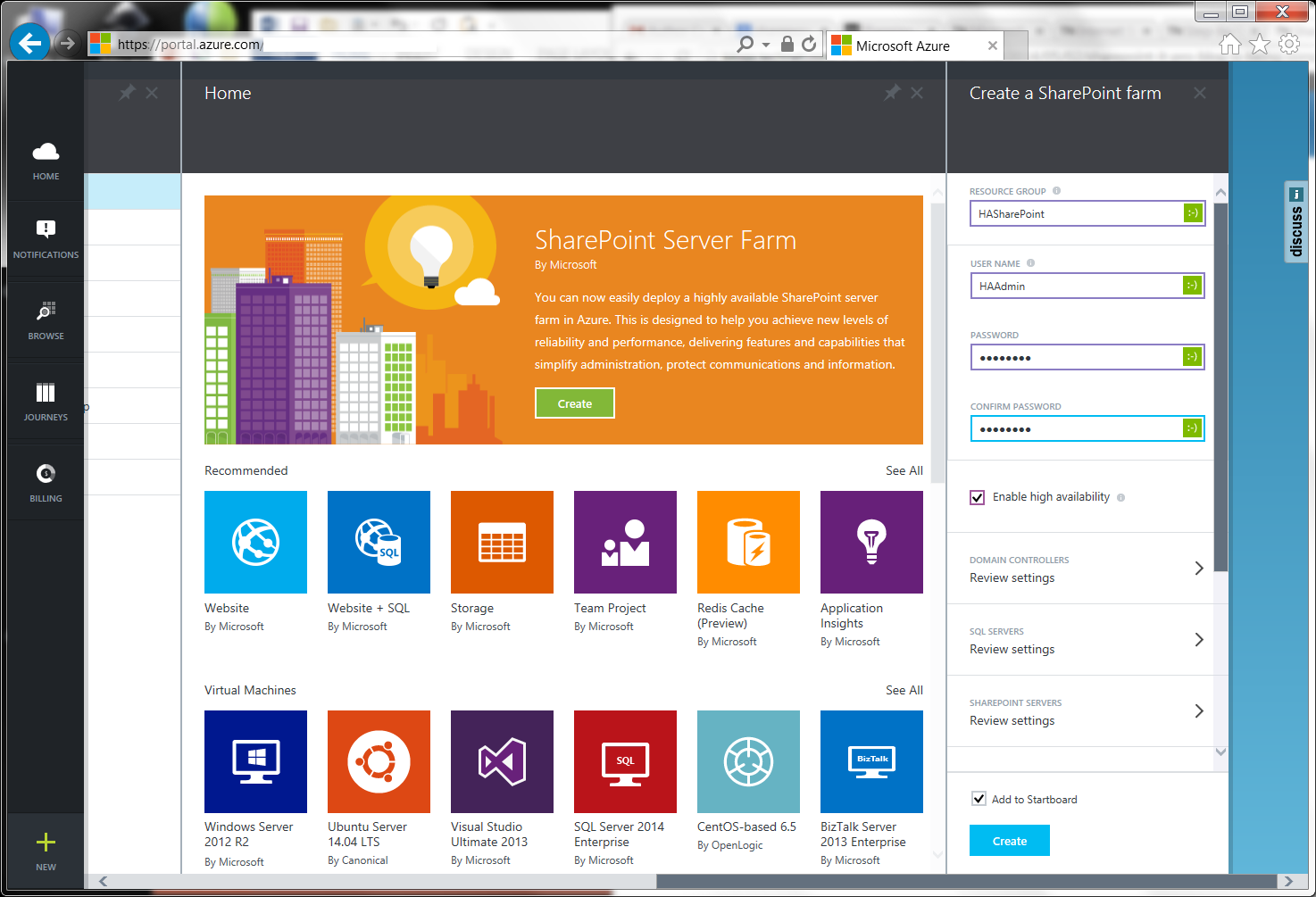Why SharePoint on Azure?
Editor’s note: In partnership with Microsoft Press, now celebrating their 30th year, MVPs have been contributing to an ongoing guest series on their official team blog. Today’s article is from SharePoint MVP Tom Resing which is the43rd in the series.
Why SharePoint on Azure?
Last week, at the Worldwide Partner Conference, a new SharePoint Farm option for Azure was announced. The new SharePoint Farm Gallery option from the Azure Portal is now, by far, the easiest way to get started with SharePoint on Azure. Type in a name for the Farm’s Azure Resource Group and credentials for the Administrator account, and the rest of the farm creation is automated.
SharePoint in the Cloud
As you may know, Office 365 includes SharePoint Online as a component. If you want to do SharePoint in the Cloud, it doesn’t get any easier to set up or less expensive than Office 365.
If it’s not easier or less expensive, why chose Azure over Office 365?
The TechNet article Microsoft Azure Architectures for SharePoint 2013, gives 4 reasons:
1) Development and Test
2) Disaster Recovery
3) Internet Sites
4) App Farms
Development and Test
From the beginning of my time working with SharePoint, creating and maintaining development and test environments has consumed a very large amount of my time. I started in the early days in 2006 when VMWare was my only option. Then my Microsoft Certified Master training and tests 4 years later required me to learn Hyper-V. Along the way, I made good use of the excellent online environments at Cloudshare.com. I’ve tried it all. To this day, I still maintain a SharePoint 2013 environment locally on my laptop for demonstrations. When I trust I can get reliable internet connections presenting at all conferences, I’ll be ready to trade that heavy laptop in for a more nimble machine and an Azure Farm.
Today, development environments in Azure are easy and can be done pretty much for free, with an MSDN license. Here’s a great chart authored by Simon J.K. Pedersen on the cost:
Machine |
Pricing Tier |
RAM |
Cores |
Price/Hour (Pay-As-You-Go) |
Price/Hour (MSDN) |
Domain Controller |
Basic A1 |
1.75 |
1 |
$0.075 |
$0.047 |
SQL Server |
Standard A5 |
14 |
2 |
$2.10 |
$0.248 |
SharePoint Server |
Standard A5 |
14 |
2 |
$0.30 |
$0.248 |
With these prices you will be able to run your environment for around 276 hours, or more than 30 days if it is only online 8 hours a day, on a Visual Studio Ultimate MSDN subscription with $150 Azure Credit (MSDN subscribers don’t pay extra SQL servers and only pay linux prices for the VMs). If you are not using an MSDN subscription, your price will obviously be a lot higher.
Disaster Recovery
Azure offers a great option for a secondary location for your on-premises SharePoint farm. You can really take advantage of the on-demand nature of cloud infrastructure as a service in many disaster recovery scenarios. Continue reading full article here
About the author
Tom is an advocate for, architect of and developer of web sites and has been for almost 20 years. He's been very lucky to work with some of the best tools available in the web development world like Visual Studio, IIS, SharePoint and Azure. Tom has received 2 MVP Awards in SharePoint for his community contributions including writing, speaking at and organizing technical events. Follow him on Twitter.
About MVP Mondays
The MVP Monday Series is created by Melissa Travers. In this series we work to provide readers with a guest post from an MVP every Monday. Melissa is a Community Program Manager, formerly known as MVP Lead, for Messaging and Collaboration (Exchange, Lync, Office 365 and SharePoint) and Microsoft Dynamics in the US. She began her career at Microsoft as an Exchange Support Engineer and has been working with the technical community in some capacity for almost a decade. In her spare time she enjoys going to the gym, shopping for handbags, watching period and fantasy dramas, and spending time with her children and miniature Dachshund. Melissa lives in North Carolina and works out of the Microsoft Charlotte office.

.jpg)